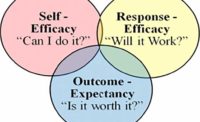It’s also common to combine awareness and commitment. Employees receive the convincing rationale and then publicly sign a pledge card, for instance, promising to wear PPE under specified circumstances for one month.
You would expect more PPE use with the awareness-plus-commitment approach than with awareness alone. When people make a public statement to do something, they encounter both personal and social pressures to follow through. Back in January 1996, I explained in my ISHN column that the power of public commitment is tied to the consistency principle — “a tool of influence lying deep within us, directing our actions (and reflecting) our motivation to be and appear consistent.”
Now evidence suggests that a third method, combining commitment and the “hypocrisy effect,” is most influential in bringing about desired changes. In this case, employees publicly commit to a certain safety action (to wear safety glasses and earplugs, for example). Then they list situations when they should wear eye and hearing protection but don’t, such as when mowing the grass in their backyards.
In this article, I want to explain the hypocrisy effect, and why you should test it in your safety efforts.
Examining the evidence
Let’s start with the empirical evidence. Elliot Aronson, one of the world’s most honored social psychologists, and his students conducted a series of experiments to demonstrate the power of combining commitment with a procedure that reminded participants of their hypocrisy — inconsistencies between their commitment and their prior behavior. Targeted behavior in these experiments focused on AIDS prevention, water conservation and resource recycling.Participants first made a public commitment to take a certain course of action, and then completed an exercise that reminded them of their failures to perform according to their commitment. In all three studies, the hypocrisy exercise led to more desired behavior – use of condoms, shorter showers and more recycling — than awareness or commitment approaches.
Explaining the effect
How can the hypocrisy effect be explained? Why does this kind of intervention influence more behavior change than standard awareness and commitment procedures?Let’s return to the consistency principle. Given a person’s desire to keep their words in line with their actions and vice versa, having people remind themselves of an inconsistency between what they say they will do and what they actually do leads to internal conflict or tension. Social psychologists call this “cognitive dissonance.”
This internal tension is not a pleasant state. It challenges one’s personal integrity. How do you reduce this tension and restore a sense of integrity? Easy — simply change your behavior to make it consistent with your commitment.
You might want to use a hypocrisy exercise the next time you attempt to motivate employees to follow certain safety procedures. Remember, evoking internal tension by reminding people that their personal commitment is inconsistent with their past actions leads to more desired behavior change than
a standard awareness or commitment
intervention.
Stirring up feelings
I’m sure you can think of various ways to use this technique to increase participation in safety-improvement efforts. Simply ask people to commit publicly to do something for safety, and then ask them to think of times when their behavior has been inconsistent with their commitment. Your objective is to stir up feelings of being hypocritical or inconsistent.Of course, you need to obtain the initial commitment, and that could be a challenge in some situations. However, I’ve found it easy to get people to state openly that they hold safety as a “core value.” It’s common for workers to admit that the greatest reward for supporting a safety initiative is to go home in one piece, and to see their coworkers do the same.
Safety must be a core value, not just a
priority. Try facilitating a discussion that leads to participants publicly voicing their commitment to safety as a core value. This might be enough to establish a context for the hypocrisy effect. Next, ask employees who claim safety as a value to make a
list of things they do in their work areas
that are inconsistent with holding safety as
a value.
Testing ideas
Many questions arise from this exercise:- Should the list of inconsistencies be private or public?
- Suppose it’s possible to create group tension by obtaining group consensus that safety is a value, and then listing specific behaviors observed by group members that are inconsistent with safety as a value. Would this exercise lead to a group hypocrisy effect? Would team members be motivated to reduce collective tension by adjusting their personal and interpersonal behaviors? And would this group exercise be more efficient and effective at improving safety-related behavior than the individual approach used in the research literature?
- How long will the beneficial behavioral impact of the hypocrisy effect last?
Since no safety research has tested the hypocrisy effect, we are left with critical empirical questions with no answers. These questions can’t be answered until intervention ideas such as I’ve described here are attempted and evaluated. So what’s holding you back? Test the hypocrisy effect, and please let me know what you find out. We all have so much to learn about ways to prevent workplace injuries.
Sidebar: Three methods for changing attitudes & behaviors
1. Awareness- employees receive a clear and persuasive rationale about the need to wear safety glasses and hearing protection in a certain work area.2. Awareness + Commitment-employees receive the convincing rationale and then publicly sign a pledge card, promising to wear this PPE under specified circumstances for one month.
3. Commitment + Hypocrisy-employees publicly sign the pledge card to wear safety glasses and earplugs and then develop a list of situations in which they should wear this PPE but don't, such as when mowing the grass in their backyard.


